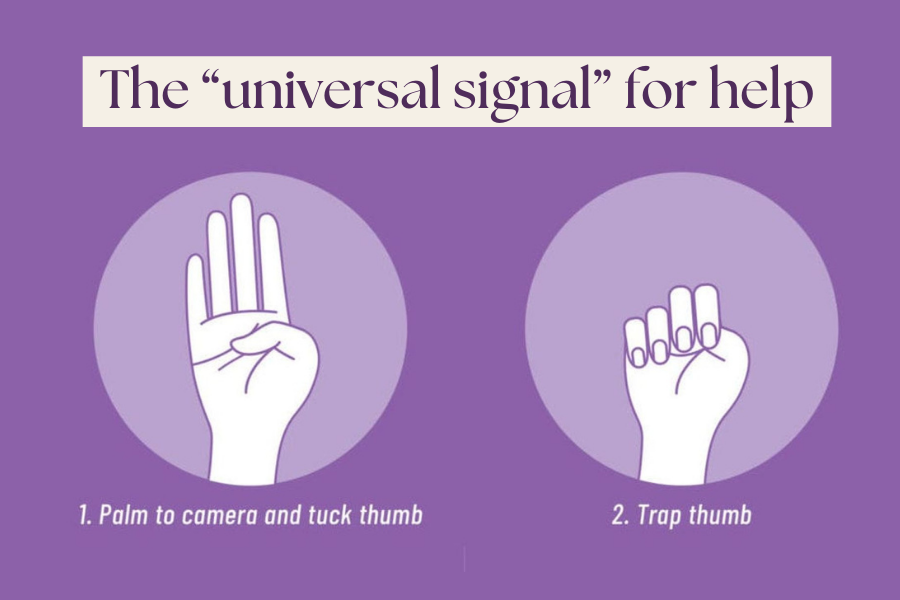by Maggie Szeder, Manager of Prevention, Education & Outreach
In the time that I’ve worked in this field, a few unique ways for someone to signal for help have come (and gone).
Like the Black Dot campaign, started around 2015, which involved survivors drawing a black dot on the palm of their hand and flashing it to someone who might be able to help. Or you may have heard of the angel shot. Order this at the bar as a way to signal to restaurant staff that you’re feeling unsafe and need help. Or more recently, one made popular by TikTok, the universal signal for help.
Claudia, a counselor at WIT, learned about the universal signal in 2020 through the Canadian Women’s Foundation. It was created to help people experiencing abuse signal to family and friends for help while stuck at home. She loves it because “you don’t need to speak English to ask for help.” She said that the use of a hand signal really appeals to an international audience because it overcomes a language barrier, and in fact the signal has been co-opted by human trafficking survivors as well.
Claudia added that she also likes how the signal can help bystanders know that the person needs helps, empowering them to more confidently spring into action.
Danielle, WIT’s Lifeline coordinator, has mixed feelings about the signal, which she first learned about through TikTok. “I love the idea of symbols for help,” she explains, but, “the danger comes in, in talking about it and referring to it in a universal way.” Put simply, if everyone knows the signal, that means abusers know the signal too, making it less safe for survivors to use. But the concept is great! Danielle reflected that individuals consider creating their own, unique signal to use with close family and friends to alert them if help is needed.
As for me? Well, until a few a weeks ago, I had never heard of the ‘universal signal’. Universal across languages, yes. Universally known? Not quite. So, while it certainly is a compelling tool for people to use to try to get help, it should not be the only tool.
And in reality, safety planning with individuals experiencing abuse requires lots of tools to achieve safety.

